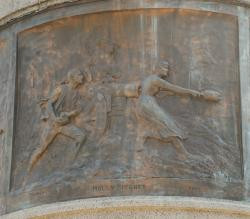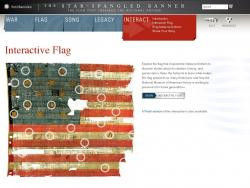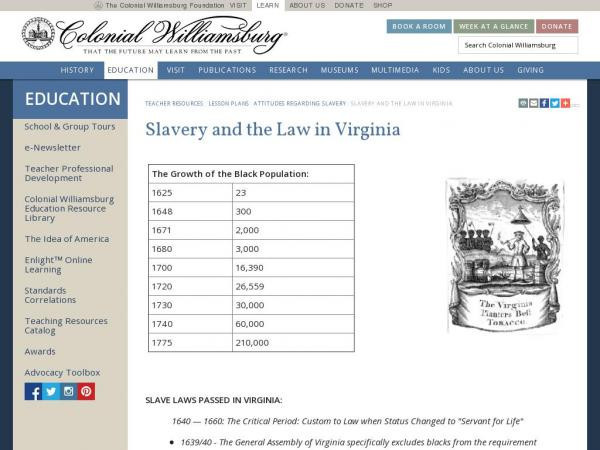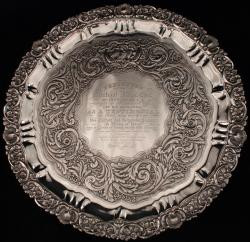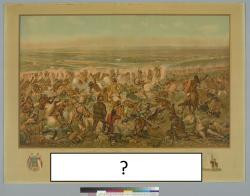Kate Harris
Social Studies teacher
Pittsburgh CAPA
Middle School (13 to 15 years old), High School (16 to 18 years old)
Teacher/Educator
Language Arts And English, Civics, Literature, Cultures, Economics, Social Studies, Geography, Writing, US History, Arts, Other
I'm a history-lover, art fan, and bookworm. I taught high school history (U.S. History and World Religions) for ten years in North Carolina, teach currently in Pittsburgh, PA, and am working to help teachers make the most of this new resource!
Kate Harris's collections
Women and Gender During the Revolutionary War
<p>The Revolutionary War was an interesting time for women, women served in a lot of conventional ways such as cooks, maids, and nurses; however, women also served in a lot of unconventional ways such as spies and even soldiers. Race was also a factor in when accounting for the roles that women played. The following items are a small symbolic representation of the many various contributions that women made during the Revolutionary War.</p>
<p>Some additional source material:</p>
<p><a href="http://www.history.org/History/teaching/enewsletter/volume7/nov08/women_revarmy.cfm">http://www.history.org/History...</a></p>
<p><a href="http://score.rims.k12.ca.us/score_lessons/women_american_revolution/">http://score.rims.k12.ca.us/sc...</a><br></p>
<p><a href="http://www.historycentral.com/Revolt/Americans/Women.html">http://www.historycentral.com/...</a><br></p>
<p><a href="https://allthingsliberty.com/2013/10/10-amazing-women-revolutionary-war/">https://allthingsliberty.com/2...</a><br></p>
<p><a href="https://www.revolutionary-war.net/revolutionary-war-women.html">https://www.revolutionary-war....</a><br></p>
 Kate Harris
Kate Harris
12
How did this happen? How do we keep it from happening again?
<p>My lesson is aimed at my AP Government class and will be divided into two parts. I will teach it towards the end of the year, as part of our unit on Civil Liberties. </p>
<p><strong>Part 1: How did this happen? </strong></p>
<p>What government actions led to the incarceration of Japanese-American citizens? What social conditions led to this? What connections do we see to today?</p>
<p>In this section, students will review the timeline of government actions that led to incarceration (including land acts, the ABC lists, the obfuscation of Exec Order 9066, and censorship of documentation/photography) and analyze images and press/propaganda that reflect existing social perceptions and anti-Asian sentiment. They will look for continuing patterns that emerged after 9/11 and more recently in response to the Covid-19 pandemic. </p>
<p><strong>Part 2: How do we keep it from happening again? </strong></p>
<p>How do people resist government power and policy? How do people shift from bystanders to allies?</p>
<p>In this section, students will visit stations to learn about different types and methods of resistance. These sections will include: Teachers/Librarians, Court Cases and Legal Advocates, Family to Family Help, and No-No Boys and the Heart Mountain Fair Play Committee. </p>
<p>At the end of this activity, students will work on a written reflection considering what they have learned from these examples of resistance.</p>
<p><em>This collection was made as part of a 2022 Landmarks of American
History and Culture workshop “Little Tokyo: How History Shapes a
Community Across Generations,” which has been made possible in part by a
major grant from the National Endowment for the Humanities: Democracy
demands wisdom. Any views, findings, conclusions, or recommendations
expressed in this collection do not necessarily represent those of the
National Endowment for the Humanities or the views of the workshop
presenters/ host institution. #NEHLittleTokyo2022</em></p>
 Kate Harris
Kate Harris
32
Socialism in the Gilded Age
<p><br><strong>Overview:</strong> When facing challenges in society, activists must determine not just what kinds of changes might need to be made, but how much change, and how fast. A study of the growing socialist and anarchist movement during the Gilded Age in the United States (with a focus on Pittsburgh), will help students analyze why some people might advocate for radical change while others fear it. Students will then apply their new understanding when discussing responses to current social movements. </p>
<p><strong>Questions for discussion throughout the lesson include:</strong></p>
<ol><li>What kind of change is/was needed? How might the answer to this question depend on your perspective (worker, farmer, politician, or business-owner?)</li><li>How much change is /was needed? How might the answer to this question depend on your perspective (worker, farmer, politician, or business-owner?)</li><li>Why might radical change be scary for some individuals but appealing to others? </li><li>What kinds of demands and strategies result in the most progress?</li></ol>
<p><strong>Pacing/curriculum: </strong>This lesson can be used when discussing the response of workers and the labor movement to Gilded Age industrialization, or as a point of comparison when studying the other social reform movements of the late 19th and early 20th century, Populism and Progressivism. Just prior to this lesson, students in my classroom would have been studying the problems of workers and city-dwellers during the Gilded Age and the rapid growth of industrialization.</p>
<p><br>The lesson is designed to be used during 1-2 70 minute class periods and can be implemented in an entirely remote learning environment. The first day could consist of the warm up around socialism, and the why did it appeal/why was it scary t-charts. The second day should focus on connections to today and the question of revolution vs. reform located in the second half of resources in the collection. <br></p>
<p>#civicdiscourse</p>
 Kate Harris
Kate Harris
37
Quilt Quest
<p>Did you know that quilts are also historical artifacts? Use this collection to learn more about how curators investigate quilts to learn about their origins, and then explore a variety of different quilts that tell us important things about the time in which they were made and the crafters who made them. Finally, make your own quilt depicting an important historical moment. </p><p>tags: quilt, craft, activity, review</p>
 Kate Harris
Kate Harris
19
The Irish Experience in Pittsburgh
<p>Created for the AIU3 workshop on 3/17/17, this topical collection includes images from Historic Pittsburgh (<a href="http://digital.library.pitt.edu/images/pittsburgh/">http://digital.library.pitt.edu/images/pittsburgh/</a>), the Smithsonian Collection, the records of the Ancient Order of Hibernians in the Detre Library and Archives, Heinz History Center, and additional web resources. This large group of documents is intended to be shaped and whittled into useful collections for individual classrooms. Teachers might consider linking the documents to themes like:</p><p>•Immigration</p><p style="margin-left:32px;">•Push and Pull factors</p><p style="margin-left:32px;">•Growth of social networks</p><p style="margin-left:32px;">•Assimilation</p><p style="margin-left:32px;">•Nativism</p><p style="margin-left:32px;">•Contributions (Political, Cultural, Military, Philanthropy)</p><p>•Industry in Western PA</p><p>•Labor Movement</p><p><br /></p><p>To make this collection your own, copy it and then use the edit feature to add and remove documents as well as contribute any annotations that might help your students. </p>
 Kate Harris
Kate Harris
29
All You Need is Love
<p>The best of love-themed graphic design in the Smithsonian Institution's collections. </p>
 Kate Harris
Kate Harris
12
Geometry and Islamic Art
<p>This is a collection of artifacts representing geometric motifs in Islamic art. Students will learn why these complex patterns are so prevalent in Islamic art, practice spotting different types of patterns, and begin to create their own, using just a ruler and a compass. They will also have an opportunity to explore the concept of tessellation using an interactive tool.</p><p>tags: geometry, circle, angle, star, mosque, mihrab, tile, Muslim, Islam, religion</p>
 Kate Harris
Kate Harris
16
Portraits of James Baldwin
<p>This student activity begins with an analysis of two portraits of James Baldwin by different artists. Then, students are asked to create their own portrait of Baldwin by remixing source material from this collection. Student portraits should answer the following questions:</p><p>1. How do you think James Baldwin should be remembered?</p><p>2. What are Baldwin's contributions to American life and culture?</p><p>Students may need to do additional research on Baldwin and his life in order to complete this assessment. This is an opportunity for students to learn about and explore the life of a revolutionary writer who presents a unique view of the civil rights movement and status of African-Americans in the United States.</p>
 Kate Harris
Kate Harris
25
Who is Frances Mary Albrier?
<p>This is a collection of items belonging to, or about, Frances M. Albrier. Although an important female leader and activist during the mid-20th century, many students may not have heard of Ms. Albrier. Encourage students to act as history detectives, exploring the collection to determine why this woman's belongings are in the collections of the Smithsonian.</p>
<p>Some questions to consider:</p>
<ul><li>What are Albrier's main accomplishments? What types of occupations did she have?</li><li> Based on these, what values do you think were important to her?</li><li>How does Albrier's life reflect major changes for women during the 20th century? Changes for African-Americans?</li><li>What do these items tell us about challenges facing African-American women in the mid-century?</li><li>What remains unknown about Albrier based on this collection? Where else could you go to look for more information?</li><li>Look at an encyclopedia entry for Ms. Albrier. Are there any events mentioned not covered in this collection? What might be a good item to add in order to better show her life?</li></ul><p><br /></p>
<p>tags: activism, civil rights, union, labor, voter registration, 60s, world war II, shipyards, WW2, nursing, Red Cross, National Council of Negro Women, Nigeria, independence, peace, moral rearmament, #BecauseOfHerStory</p>
 Kate Harris
Kate Harris
15
Examining Icebergs
<p>What can we learn about global climate change by examining icebergs? This teaching collection provides resources to support a lesson on climate change and polar ice melt. It includes a video, link to a lesson plan and photo essay from the Global Oneness Project, images, and a Smithsonian article. </p><p>tags: climate change, global warming, iceberg, glacier, melt, temperature, environment</p>
 Kate Harris
Kate Harris
6
Watch Night
<p>This collection asks students to examine an image entitled "Waiting for the Hour" and to try to determine its meaning and purpose. Students will practice interpretation with justification and then learn more about the history of "watch night services" and the importance of the 1862 watch night in United States history. They will also consider the legacy of this image--a copy is currently hanging in the White House. </p><p>tags: emancipation, freedom, Civil War, Abraham Lincoln, proclamation</p>
 Kate Harris
Kate Harris
4

